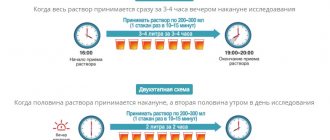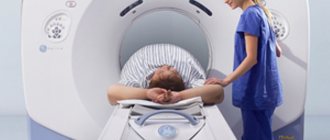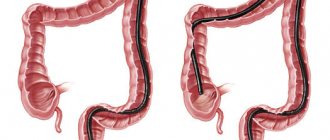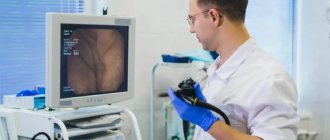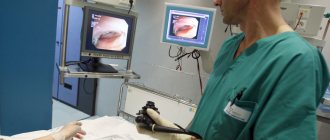A visit to some doctors requires preparation. In this article we will talk about the correct preparation for a proctologist - how to prepare for a visit to a proctologist: what to do, how and in what sequence, and what methods exist.
These tips are universal and suitable for those who:
- goes to a proctologist for the first time for an examination;
- plans to undergo outpatient treatment - bloodless microsurgical procedures without hospitalization.
Is it necessary to prepare for the appointment?
Preparation has two main goals: 1 - cleanse the intestines of decay products, 2 - get rid of gas formation.
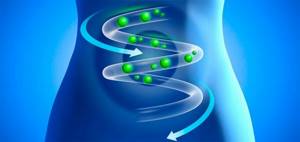
Firstly, such preparation will relieve you of the feeling of embarrassment due to various physiological manifestations of the digestive system (for example, flatulence or involuntary discharge of rectal contents). This means you can feel much more calm and confident.
Secondly, in order to establish an accurate diagnosis, the doctor must conduct a comprehensive examination using special equipment (anoscopy and sigmoidoscopy). This is only possible if the rectum is first cleansed.
Who DOESN'T need to prepare?

If the pain in the anus is so severe that it is impossible to even touch, you can come to see a proctologist without preparation.
In this case, the doctor will provide first aid, but will not be able to conduct a full diagnosis. Therefore, at your initial appointment, the doctor will most likely recommend that you come back when the pain subsides and you can prepare.
How to eat

About a day before visiting a proctologist, you need to exclude fried and fatty foods, heavy meat and fish dishes, and mushrooms from your diet.
It is advisable that a person’s diet before going to the proctologist include cereals, vegetable soups, dietary white meat (turkey, chicken), and a large amount of fruits and vegetables. The latter contain a large amount of dietary fiber - fiber. This substance stimulates intestinal muscular peristalsis, improving digestion.
It is strictly not recommended to consume foods that stimulate gas formation in the intestinal tract and contribute to the development of flatulence. These include:
- legumes;
- cabbage;
- potato;
- black and whole grain bread;
- carbonated drinks, especially sweet ones.
Also, before visiting a proctologist, it is necessary to completely avoid alcoholic beverages, as they adversely affect the condition of the digestive system.
Important! The presence of gas can make examining the rectum much more difficult, so dietary recommendations must be followed.
On the day of your visit to the doctor, it is advisable not to eat for several hours before the proctological examination. If the examination is scheduled in the first half of the day, then it is better not to eat in the evening and have breakfast after the diagnosis. If the visit is scheduled for a later time, you can eat a light breakfast. It is better to refrain from eating 3-4 hours before the test. Before taking, you can drink water or unsweetened tea. It is acceptable to consume fruit juices that do not contain pulp or sugar.
Features of nutrition for diabetes and chronic diseases
For some serious illnesses, changing your diet can have a negative impact on your overall health. Therefore, if you are under medical supervision or regularly see a specialist for diabetes or chronic diseases, it is advisable to consult with your doctor.
Pharmacology
The drug is a laxative. Intended for rectal use. The composition contains several active components that enhance each other’s effect on the human body, helping to soften stool and facilitate the process of defecation.
Sorbitol helps increase the amount of fluid entering the intestinal lumen, which increases the volume of stool and softens it. As a result, the process of defecation is greatly facilitated.
Sodium citrate helps displace fluid from stool.
As a result, water is displaced from the stool and the amount of fluid entering the intestines increases, which significantly facilitates the process of defecation in people who suffer from hemorrhoids and constipation.
The effect of the drug is observed within 5-10 minutes from the moment of using the microenema. But the effect of the drug may depend on the patient’s personal characteristics.
Information on pharmacodynamics is not available.
How to cleanse the intestines
In order to remove residual feces from the rectum, the following can be used:
- cleansing enema using the Esmarch Cup and clean water;
- medicinal microenemas;
- laxatives.
Each of these methods has its own pros and cons. Let's look at them in more detail.
Cleansing enema using the Esmarch Cup and clean water
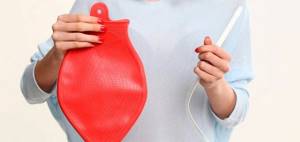
Esmarch's mug is a special device for administering enemas. Sold in a pharmacy. It consists of a water container, a rubber tube and a special tap for regulating the volume and speed of liquid supply. The so-called clyster heating pad works on the same principle—you can use that too.
This is the most effective method of cleansing the intestines. A cleansing enema before an examination by a proctologist is usually performed twice: the first - on the eve of the examination, the second - on the day of the visit to the doctor.
Calculate the time so that between the last cleansing and the start of your appointment at the clinic there is a time period of approximately 3-4 hours. During this time, you may feel the urge to defecate due to the presence of residual water in the rectum. This is completely normal, but may interfere with the inspection process and hardware diagnostics. Therefore, when such urges arise, they do not need to be restrained. On the contrary, it is better to visit the toilet every time and empty the intestines of water accumulations.
If necessary, you can increase the number of enemas to 3-4 pieces. Additional manipulations are required when there is a large accumulation of feces (for example, against the background of prolonged constipation).
Instructions for administering an enema
- Fill Esmarch's mug with clean warm water (about 1.5-2 liters will be required).
- Lubricate the tip of the device with some greasy ointment or cream (for example, vegetable oil or Vaseline).
- Lie on the couch, on your left side, with your legs bent towards your stomach - take the “fetal position”.
- Place a towel under the buttock area.
- The assistant should hold Esmarch's mug at a height of 1.5 meters from the floor.
- Carefully insert the lubricated tip into the anus.
- Open the tap of the device so that the liquid enters the rectum through the anus.
- Lie down until a strong bursting sensation appears.
- After this, the patient should go to the restroom and empty the rectum.
The main advantages of a water cleansing enema
- high cleaning efficiency,
- safety (if instructions are followed),
- low cost.
"Disadvantages" of a water enema
- inconvenient for independent use (it is advisable to have someone help carry out the procedure);
- causes negative, repulsive feelings in many people;
- may cause pain due to the introduction of large amounts of water into the rectum;
- Some of the water may linger inside the intestines and come out in small portions - and the urge to defecate may occur quite often.
Contraindications to the use of water enema
- Severe pain in the anus.
- Malignant neoplasms in the anal canal.
- Inflammatory diseases of the mucous membrane.
- Presence of intestinal bleeding.
- History of rectal prolapse.
- Anal fissures.
Cleansing the intestines with an enema in these conditions is unacceptable, since inserting the tip into the cavity of the anal canal can injure the inflamed tissues and aggravate the course of the disease.
Cleansing with medicinal microenemas
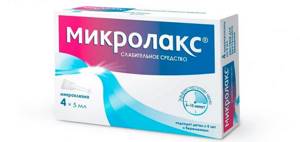
Microenema is a more gentle procedure that causes virtually no discomfort. Sold in pharmacies, no prescription required. Most often, experts recommend using the drug Microlax. Reviews from people who have used this product prove its high effectiveness in cleansing the intestines before visiting a proctologist for both men and women.
A microenema is a small tube with a thin tip. The tube is filled with liquid with a volume of only 5 ml. One such tube is intended for one-time cleansing. The drug begins to act within 5-15 minutes after injection into the rectum.
To fully cleanse the rectum, 2-3 procedures are required. The last procedure is recommended to be carried out approximately 2 hours before the proctologist’s appointment. Preparing with Microlax is very convenient, especially if you plan to visit the doctor in the afternoon.
How to prepare for an appointment with a proctologist using Microlax microenemas (step-by-step instructions)
- Wash your hands, then rinse the outside of your anus (as usual, in the shower).
- Break off the seal on the tip of the tube. This must be done immediately before use.
- Gently press on the tube and release a couple of drops of liquid so that they sprinkle the outside of the tip.
- Insert the tip into the anus and squeeze out the contents of the tube. Adults and children over 3 years of age are given the entire liquid. Children under 3 years old - half (there is a special mark on the tube).
- Without unclenching your fingers, squeeze out the tube.
- Wait 5 to 15 minutes until a strong urge to defecate appears. The waiting time depends on the individual characteristics of the body.
- Empty your bowels.
- Repeat 1 or 2 more times. Focus on your own feelings: in most cases, 2 microenemas (in total) are enough, but if you feel that the intestines have not been completely cleansed, do 3 microenemas.
Note!
Microclysters have contraindications. Carefully read the leaflet and instructions included in the package. It is also necessary to consult a specialist. You can get advice by calling the clinic where you plan to undergo examination and examination.
Laxatives
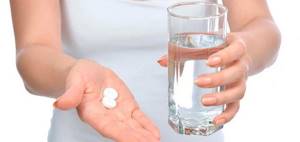
One of the popular questions from patients is “Can I take a laxative to prepare for a visit to the proctologist?”
Doctors do not recommend using laxatives. The reasons are as follows:
- It is impossible to accurately calculate when they will take effect.
- The body's reaction is unpredictable. There is a risk of loose stools and diarrhea, which are quite difficult to get rid of.
- They put a significant strain on the cardiovascular and digestive systems.
It is strictly not recommended to take laxatives for the following pathologies:
- severe disorders of cardiac function, including chronic heart failure;
- malignant neoplasms in the intestines, accompanied by widespread damage to the organ mucosa;
- severe dehydration;
- acute infectious processes with severe course;
- complete or partial intestinal obstruction.
Contraindications
Comprehensive bowel preparation is not performed in patients1:
- with severe forms of inflammatory bowel diseases (Crohn's disease, ulcerative colitis, pseudo-obstruction of the colon);
- with contraindications to endoscopic examinations - with diverticulitis, colon perforation, acute stroke and myocardial infarction;
- requiring special approaches - pregnant women, children, acute intestinal obstruction, intestinal bleeding, etc.
Personal hygiene
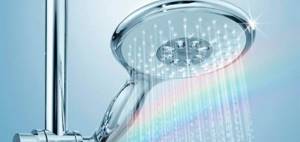
The final stage of preparation for an appointment with a proctologist is ordinary intimate hygiene, which involves washing the genitals and anus. It is advisable not to use antiseptics, as they can destroy the skin flora, which is sometimes taken for analysis. It is better to use regular baby soap.
After washing, pat your skin dry with a soft towel. There is no need to rub the anal area too much, as the doctor may mistake marks and redness for signs of disease.
Thus, special preparation for visiting a proctologist allows you to ensure bowel cleansing, which is necessary to assess the condition of the digestive system. Full preparation for an initial or repeated appointment with a specialist can ensure maximum information content and high reliability of the diagnostic results obtained.
Indications
The group of patients who need high-quality bowel preparation includes those who are prescribed1:
Instrumental studies:
- colonoscopy,
- endoscopic polypectomy,
- biopsy,
- video capsule endoscopy,
- colposcopy,
- transrectal ultrasound;
Minimally invasive treatment:
- hemorrhoids,
- anal fissure,
- polyps,
- gynecological diseases,
- colorectal cancer located within the anal access.



